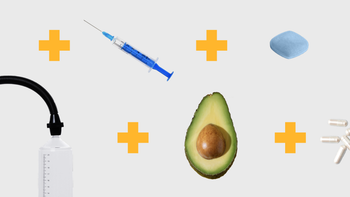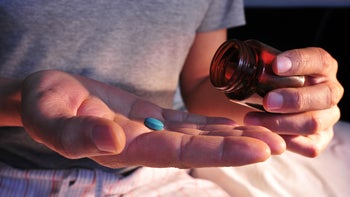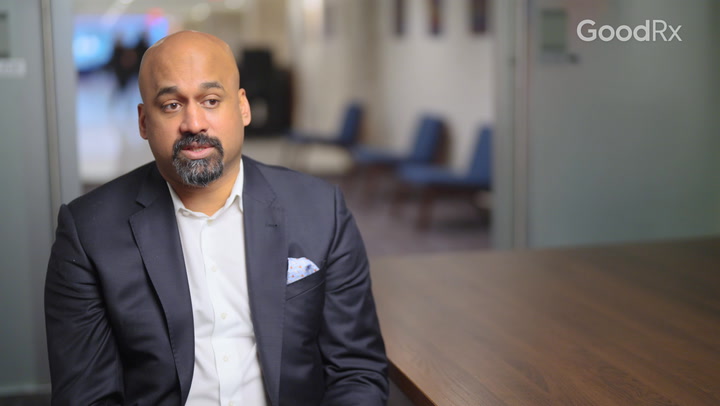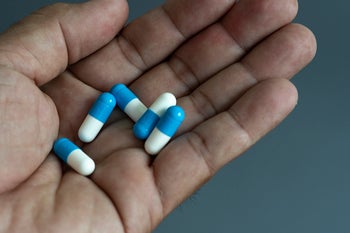
Viagra vs. Cialis vs. Other Popular ED Meds: Which One Is Best?
Key takeaways:
The best treatment for erectile dysfunction (ED) is the one that is best for you. Sildenafil (Viagra) and tadalafil (Cialis) are the most commonly-prescribed medications for ED, and they have the longest track record.
For occasional use, most people start with sildenafil. For regular use, tadalafil may be a better fit. Some people prefer to alternate between medications.
All ED meds are equally safe and effective. In most cases, your unique relationship needs, lifestyle, and insurance coverage will help you decide between them.
There are many ways to save on ED medications. Many are available as lower-cost generics or have other copay savings opportunities. GoodRx can help make your prescription more affordable.
Access savings on related medications
Table of contents
You’ve likely heard of Viagra, Cialis, vardenafil (previously sold as Staxyn and Levitra), and Stendra. These are commonly-prescribed treatments for erectile dysfunction (ED) — when a person has regular difficulties getting or maintaining an erection for satisfying sexual intercourse.
With all of these choices, is there one best ED medication? Below, we’ll discuss some key differences between ED medications to help you navigate your treatment options.
What is the best ED medication?
There’s no single best ED medication. But there are some differences between them that may make one treatment a better fit for you than another.
Key differences between ED medications
Sildenafil (Viagra), tadalafil (Cialis), vardenafil (formerly sold under the brand names Levitra and Staxyn), and avanafil (Stendra) belong to a class of drugs known as phosphodiesterase 5 (PDE5) inhibitors. PDE5 inhibitors increase the amount of blood that fills the penis, helping an erection last long enough for satisfying sex. They don’t affect arousal or libido.
All of these medications have been proven to be safe and effective for ED treatment. And some people even prefer to alternate between PDE5 inhibitors, depending on their lifestyle and relationship status.
Search and compare options
The main differences between these medications have to do with:
How you take them (with or without food)
How long they last (4 to 36 hours, though an erection should not last that long)
How often you plan to use it
Which side effects they have
How much they cost
Your healthcare professional might also recommend one over another depending on whether your ED is mild or more severe.

Viagra
Viagra was the first major medication the FDA approved for ED. It’s been available in the U.S. since 1998.
For occasional use, most people start with sildenafil. It’s often prescribed for mild or moderate symptoms. Here’s an overview:
How to take it: You should take Viagra on an empty stomach. If you really need to eat, then try waiting at least 1-2 hours after your meal before you take Viagra. It’s best to choose a light, low-fat meal since fatty meals and alcohol can slow down the time it takes Viagra to kick in by about 1 hour.
How fast it works: Viagra can start to take effect in as little as 30 minutes. But usually you’ll have to wait 45 to 60 minutes before it reaches maximum effect. Then it keeps working for up to 8 hours.
Typical dose: The typical starting Viagra dosage is one 50 mg tablet as needed. If you’re getting side effects, it can be cut down to 25 mg. If it’s not fully working, it can be increased to 100 mg.
Cialis
Cialis is different from Viagra and other ED medications because it lasts much longer. You can also take it on a daily basis. For this reason, Cialis may be a better fit for regular use. It’s especially helpful for men who don’t respond as well to medications that are only taken “on demand.” Here’s an overview:
How to take it: Food doesn’t affect Cialis. You can take it just when you need it or regularly — every day — if needed.
How fast it works: Cialis can start working in as quickly as 30 minutes, but you may have to wait up to 2 hours for it to reach the point when it’s most effective. The effects of Cialis can last for up to 36 hours, helping you with erections at any point in that time period.
Typical dose: The typical starting dosage of Cialis for occasional use is one 10 mg tablet. It can be dropped to 5 mg or increased to 20 mg depending on how you respond. The daily dose for regular use is 2.5 mg to 5 mg.
Is your prescription causing trouble? Find out if an erectile dysfunction (ED) medication you take could be causing side effects.
Can ED be cured? Some cases of ED are reversible. Here’s a list of curable causes of ED and common treatment options.
Navigating interactions: Learn about how ED medications interact with other medications, dietary supplements, and foods.
Vardenafil
Generic vardenafil was previously sold under the brand names Levitra and Staxyn, but those brands have been discontinued. It has been shown to be as effective as Viagra and gets to work faster. Here’s an overview:
How to take it: Vardenafil can be taken with or without food. But high-fat foods can delay vardenafil's absorption and lower its effectiveness. Ideally, try to wait 1 to 2 hours after eating before you take it. If that’s not possible, stick to a light, low-fat meal. You can take it as needed for occasional ED symptoms.
How fast it works: Vardenafil can start working in as quickly as 15 minutes, but peak effects can take up to 1 hour. Then, it will keep working for 4 to 5 hours.
Typical dose: The typical starting dosage of vardenafil is one 10 mg tablet. It can be cut back to 5 mg or increased to a maximum of 20 mg. Vardenafil is available as a traditional pill that you swallow and a rapidly dissolving pill (which gets to work faster).
Stendra
Stendra is a newer ED medication that works similarly to Viagra, Cialis, and vardenafil. Here’s an overview:
How to take it: Avanafil comes in a pill, which food doesn’t affect. You can take it as needed for occasional ED symptoms.
How fast it works: Avanafil works a little faster on average than the other ED medications. The usual starting dose of 100 mg works within 15 minutes. With a lower dose, you’ll need to wait about 30 to 45 minutes.
Typical dose: The recommended starting avanafil dosage is 100 mg, but doses can range from 50 mg to 200 mg, depending on your need and response.
Compare ED treatments
| Sildenafil (Viagra) | Tadalafil (Cialis) | Vardenafil | Avanafil (Stendra) | |
|---|---|---|---|---|
| Generic available? | Yes | Yes | Yes | Yes |
| Onset | 30 minutes | 30 minutes | As fast as 15 minutes | Under 15 minutes |
| Maximum effect* | 45-60 minutes | 2 hours | 60 minutes | 30-45 minutes |
| Lasts as long as** | 3-8 hours | 36 hours | 4-5 hours | 5 hours |
| Affected by food? | Yes, take it 1-2 hours after eating, or with a low-fat meal | No | Yes, take it 1-2 hours after eating, or with a low-fat meal | No |
| Most common side effects | Headache, flushing, nasal congestion, upset stomach, vision changes | Headache, flushing, upset stomach; less vision changes but more muscle/back pain | Headache, flushing, nasal congestion, upset stomach | Headache, flushing, congestion, flu-like symptoms |
| * Based on Tmax data, which indicates when the medication reaches the highest concentration in your body ** Based on T½ data, which indicates how long it takes the medication to leave your body |
||||
How effective are Viagra, Cialis, vardenafil, and Stendra?
Viagra, Cialis, vardenafil, and Stendra are considered to work equally well. There isn’t much data that directly compares them against each other.
Most existing studies have only looked at how well each medication compares with a placebo (a pill with no medication in it). This means no one can definitively claim that one medication works better than the other for treating ED.
But a systematic review and meta-analysis of a few hundred studies found that Viagra, Cialis, and vardenafil resulted in improved erections in 67% to 89% of people with ED. In comparison, about 30% had improvement with a placebo. This analysis didn’t include Stendra.
How do side effects compare with Viagra, Cialis, vardenafil, and Stendra?
All PDE5 inhibitors share common side effects. Most of these are mild and can include:
Headache
Flushing
Nasal congestion
Indigestion (upset stomach)
Vision changes
Muscle pain
There are some differences, though.
With Viagra, there is a higher risk of vision changes than with Cialis. Among people who take Viagra, 3% get blue vision that lasts a few hours. On the other hand, Cialis has a slightly higher risk of muscle pain than Viagra and vardenafil.
Overall, the immediate side effects of PDE5 inhibitors don’t last very long and aren’t much of a bother. But while the side effects of these medications are similar, the jury is still out on what the risks are of taking these medications long term over several decades.
Are ED pills like Viagra, Cialis, vardenafil, and Stendra safe for the heart?
PDE5 inhibitors are generally safe for the heart. But there are two potentially serious side effects to know about:
All PDE5 inhibitors can lower your blood pressure. This won’t necessarily affect you, but it may be a problem if you also take a blood pressure medication. A sudden drop in blood pressure can make you feel dizzy, fall, black out, or even cause more serious cardiac issues.
Nitrate medications, such as nitroglycerin (Nitrostat), can have dangerous interactions with PDE5 inhibitors. Nitrate medications are commonly given to people with heart conditions like angina or high blood pressure. If you take a nitrate medication, you should never take ED medications at the same time.
How to save on Viagra, Cialis, and other ED meds
There are ways to save on ED medications:
Save with GoodRx: GoodRx can help you save significantly on the average retail price of the generic versions of ED meds. Generic sildenafil at certain pharmacies is as low as $12.00 for 30 tablets with a free GoodRx discount. You can find the same quantity of generic tadalafil and vardenafil for as low as $10.80 and $81.42, respectively.
Save with a copay savings card: If you’re eligible, you could save up to 50% off brand-name Viagra for up to 12 months using a manufacturer savings card.
Frequently asked questions
In general, ED medications work by relaxing smooth muscles and blood vessels in the penis. This improves blood flow, which allows for an erection to last longer.
Herbal products and dietary supplements that claim to be alternatives for ED aren’t regulated by the FDA. So it’s hard to determine which is best or if they’re even safe and effective. If you’re experiencing ED symptoms, it’s a good idea to speak with a healthcare professional about your treatment options.
No. Like all medications, ED medications also carry a risk of side effects. Speak with a healthcare professional about potential side effects and whether these medications would be safe for you to take.
The bottom line
Phosphodiesterase 5 (PDE5) inhibitors are a class of medications used to treat erectile dysfunction (ED). The available PDE5 inhibitors include sildenafil (Viagra), tadalafil (Cialis), vardenafil (previously sold as Levitra and Staxyn), and avanafil (Stendra).
Currently, one PDE5 inhibitor isn’t considered the best for ED. The best ED medication for you depends on many factors such as how often you plan to use it, potential side effects, and how much they cost. Plus, many people alternate between ED medications, depending on their individual needs. Talk to a healthcare professional about which ED med would be the best choice for you.
Why trust our experts?



Quiz: Is it erectile dysfunction?
References
Alembic Pharmaceuticals Inc. (2024). Tadalafil - tadalafil tablet, coated [package insert].
Bryant Ranch Prepack. (2024). Vardenafil hydrochloride - vardenafil hydrochloride tablet [package insert].
Camber Pharmaceuticals, Inc. (2024). Avanafil - avanafil tablet [package insert].
Dhaliwal, A., et al. (2023). PDE5 inhibitors. StatPearls.
Rajagopalan, P., et al. (2013). Effect of high-fat breakfast and moderate-fat evening meal on the pharmacokinetics of vardenafil, an oral phosphodiesterase-5 inhibitor for the treatment of erectile dysfunction. The Journal of Clinical Pharmacology.
Rubio-Aurioles, E., et al. (2006). Comparing vardenafil and sildenafil in the treatment of men with erectile dysfunction and risk factors for cardiovascular disease: A randomized, double‐blind, pooled crossover study. The Journal of Sexual Medicine.
Teva Pharmaceuticals USA, Inc. (2024). Sildenafil - sildenafil tablet, film coated [package insert].
Tsertsvadze, A., et al. (2009). Oral phosphodiesterase-5 inhibitors and hormonal treatments for erectile dysfunction: A systematic review and meta-analysis. Annals of Internal Medicine.


























